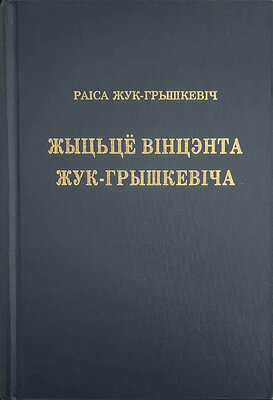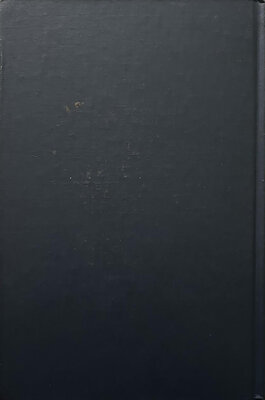Жыцьцё Вінцэнта Жук-Грышкевіча
Раіса Жук-Грышкевіч
Памер: 798с.
Таронта 1993
Canadians confuse the name Belorussian with Russian and White Russian with anti-Bolshevik Russian immigrants. There was, and still is, among Canadians a great deal of ignorance about Eastern Europe, especially about Eastern Slavs and the peoples of the Soviet Union. It is not well known in Canada that Belorussians, like the other peoples of former Czarist Russia, have struggled continuously since the Russian Revolution of 1917 for their independent democratic state, and that for this reason, the Moscow Bolshevik rulers established the Belorussian Soviet Republic and made it a member of the United Nations.3
Generally, the Soviet Union is considered by Canadians as Russia. You can notice this in the press, in textbooks and maps. You may find information in geography textbooks about the Soviet Union and Russia, but very little on the other national Soviet republics and peoples as being different nationally from Russians, although they form half of the population of the Soviet Union - over one hundred million altogether. Not too many Canadians realize that the Belorussians and other non-Russian peoples of the Soviet Union have their own territory with their own population, their own language, history and culture and that in spite of the denial of self-determination
2The Oxford International Dictionary, (Toronto, 1957), p. 1311.
3L Mienski, “Establishment of the Belorussian SSR,” Belorussian Review, Munich, Institute for the Study of the U.SD.S.R., Vol. I, 1955, pp. 5-33.
378
by the central Moscow government, they strive for their real independence and not a fictitious one.
The recent textbooks give more information on the peoples of the Soviet Union, but still consider Belorussians and Ukrainians as Russians. I quote from a geography textbook for Grade 10 published in 1961: “The name of the U.S.S.R. emphasizes the fact that it is a union of many different peoples; in fact, there are over a hundred different ethnic or racial groups within the Union’s borders. By far the largest group, however, comprising over three-quarters of the total population, are the Russians - a Slavic people related to the inhabitants of Poland, Czechoslovakia, and other East European countries. Even the Russians are divided into three major groups:
The White Russians or Belorussians, numbering ten million, who inhabit the region of the upper Dvina and Dnieper Rivers.
The Little Russians or Ukrainians, about forty million in number, live in the black-earth steppes and the surrounding territory.”4
In another textbook for Grade 12 published in 1963 we read: “Technically the R.S.F.S.R. is ‘Russia,’ but this term has come to be used for the U.S.S.R. as a whole.”5
It is very interesting that such a rather Russian, very conservative nationalistic view of Belorussians and Ukrainians should be introduced in Canadian high schools. It is in contradiction to the scientific classification of Slavs, which considers Russians, Belorussians and Ukrainians as separate peoples of the East Slavic group.6 It contradicts also the Soviet official view of Belorussians and Ukrainians.7
This general attitude of the Canadian public towards Belorussians is shared by Canadian civil servants and enumerators of the Censuses of the Canadian population. This can be seen from the Census questionnaires and Enumeration Manuals. The population questionnaire for the 1951 census included questions on mother tongue, birthplace and origin. Belorussian
4D.A. Clee, Through Europe and Asias a regional Geography of the Eurasian continent. (Holt, Rinehart and Winston of Canada Limited, Toronto, 1961), p. 314.
5Selected Studies in Regional Geography (McGraw-Hill Company of Canada Limited, New York, Toronto, London, 1963), p. 216.
6See Encyclopaedia Britannica, Vol. 20. 1966, “Slavonic languages, (classification ),” p. 787.
7See Bolshaya Sovietskaya Encyclopedia, Vol. 39, Moscow, 1957, “Slovi-anskiya yazyki,” p. 305; and Vol. 4, Moscow 1950, “Beloruski yazyk,” p. 351.
379
is not in the list of languages, nor is Belorussia mentioned in the question on origin.8
In the question on birthplace, different European countries are listed, but none that has fallen under Soviet rule, including Belorussia and the Ukraine. Of course Poland and Russia or U.S.S.R. are in parenthesis. Under lists of languages and countries, there is the remark: “If not listed, write below.” The question arises as to what to write in the case of the Belorussians.
It is easy to guess the dilemma of the enumerators who knew nothing of Belorussians and of the Belorussian respondents who look for all means to explain the name of their country, their origin and their language. The result was that, with very rare exceptions, they were listed as of Russian or Polish origin because their birthplaces were under former Russian or Polish rule. It is impossible to state with certainty how Belorussians were listed during the Census in 1951, but an analysis of interviews with even a small group of people can give an idea of what happened.
I held interviews with a small group of nationally conscious Belorussians in Toronto - 24 highly active members of the Belorussian Canadian Alliance. Of this number, only three succeeded in convincing enumerators to list them as Belorussians by origin. One of them showed to an enumerator his birthplace on the map of the Belorussian Soviet Republic; another presented his French document in which his birthplace was marked “Bielorussie” in French; the third one was lucky because the enumerator was his friend and allowed him to write in the name of his country. The rest of the twenty-one, in spite of their efforts to prove their Belorussian origin, were listed as Russian or Poles. One girl refused to give any information because the enumerator did not want to enter her Belorussian origin. She received a compromise: she was listed as “other.” It is easy to imagine how those Belorussians were listed who had not the ability to explain and prove their origin or who were less insistent. As far as mother tongue was concerned, some enumerators agreed to write in Belorussian.
In census statistics, it is not the rule to describe the Irish, Scottish or Welsh as of English origin. The same distinction is made in regard to French Canadians, whether born in Quebec or in English-speaking Canada. That is why it is difficult to
8Canada, Dominion Bureau of Statistics, Census of Canada 1951 (Ottawa, 1955), Vol. II., p. 189.
380
understand a different approach to the similar case of Eastern Slavs - Russians, Ukrainians and Belorussians.
For the 1961 census, the enumerators received more instructions about birthplaces that were uncertain because of changes in national boundaries in some parts of continental Europe or elsewhere, including the Soviet Union. We can find this in the Enumeration Manual for the 1961 census. But in this Manual too the Soviet Union is considered as Russia. True, the manual mentions U.S.S.R. and gives instructions on how to enter the birthplace for those respondents who state that they were born in one of the Soviet republics including the Belorussian. However the subtitle of the paragraph is “If born in Russia.”9
This subtitle is very significant. It gives inspiration to enumerators to consider all respondents born in the Soviet Union as Russians, especially those, who are not sure, or are not able to explain to which Republic his birthplace now belongs. According to instructions, in such a case enumerators may write in U.S.S.R., but then the respondent was considered Russian.
It is an improvement that in the 1961 census an ethnic group question was introduced with thorough explanations and examples in the above-mentioned manual as to how to make the entries.10 Unfortunately, no instructions were given on how to enter the ethnic groups from the present Soviet Union which was still considered as Russia. I think, because of such an attitude, many Belorussians during the 1961 census were listed as Russians or Poles if they were born in West Belorussia, although with some insistence it was easier than in 1951 to persuade enumerators to write in “Belorussian origin.” It seems to me that the questionnaire itself had much to do with the inaccuracies during this census. The fact that not all ethnic groups or languages were listed in many cases put enumerators and respondents in a confused position.
Population Questionnaire (Form 2A) of the 1961 census had among other things three very important points - birthplace, ethnic group and mother tongue - in which different nationalities were listed, but some ethnic groups, including Belorussians, were missing.11 I understand that larger nation-
9Canada, Dominion Bureau of Statitics, Census of Canada 1961: Enumeration Manual (Ottawa, 1961), p. 31.
10Ibid., p. 33.
^Canada, Dominion Bureau of Statistics, Census of Canada 1961 (Ottawa, 1962), Vol. I, Tables 34, 48, 63.
381
alities had priority in this case. But this fact put them in an advantageous position in relation to the smaller groups which, because they were not listed in the population questionnaire, did not have equal chances during the census. True, there was a “write in space,” but this puts them in a doubtful position; it looks as though they are less important than the groups mentioned in the lists and are dependent upon the views of enumerators who write in their statements. Some could even think: if their ethnic origin is not listed in the questionnaire it is not recognized by authorities, and so what is the use of referring to it?
Also, from the practical point of view, it would be much easier for enumerators and respondents to co-operate if there were a list of all Canadian ethnic groups and their languages without regard to how large or small they are. I understand that there is not enough space in the questionnaire for this, but a full list of ethnic groups, countries and languages could be printed separately and attached to the questionnaire. This could be a big help to both enumerators and respondents.
 КНІГІ ОНЛАЙН
КНІГІ ОНЛАЙН


